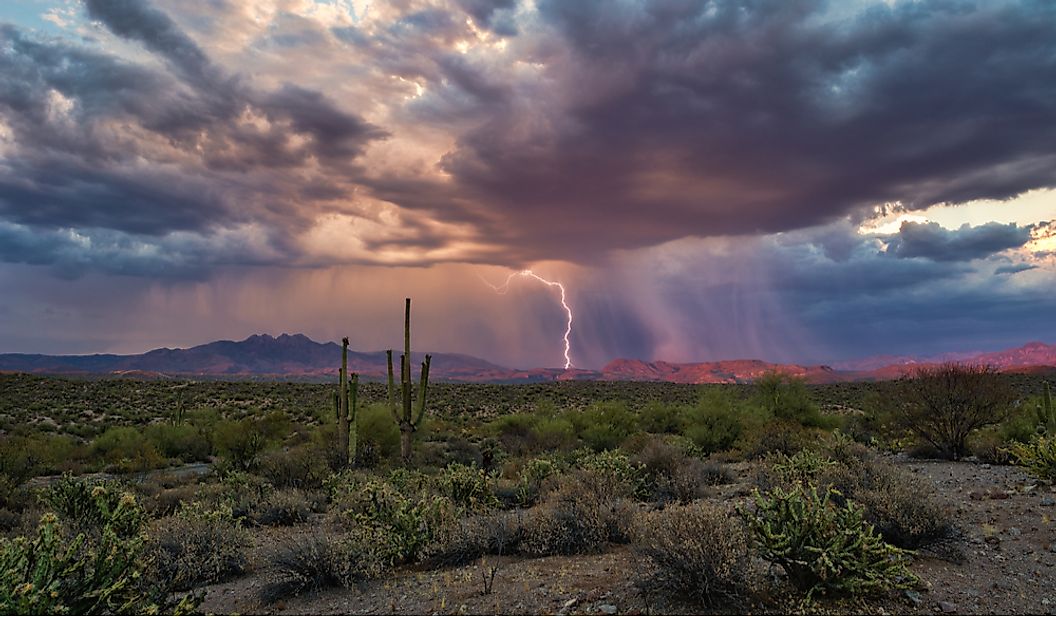
AZ MONSOON & FIRE SAFETY
Although the Monsoon Season brings rains and relief from the summer heat, the thunderstorms that come with monsoons bring their own hazards. In fact, this is the most dangerous time of year weather-wise in the Southwest. So as this season gets underway, and the increased threat of fire comes with it, we would like to remind you of a few ways to stay weather wise in Arizona.
What is a Monsoon
The term “monsoon” refers to a seasonal time of year where thunderstorms are more likely to occur. A monsoon is NOT a thunderstorm. A monsoon is a seasonal change in the direction of the winds of a region that can create conditions for a thunderstorm. The summer monsoon is associated with heavy rainfall. As winter ends, warm, moist air from the south brings a humid climate and torrential rainfall to the area.
Arizona’s monsoon season begins in June and continues through September. With it comes higher humidity, which can lead to thunderstorms, heavy rain, lightning, hail, high winds, flash flooding, dust storms and extreme heat, however, the Arizona monsoonal circulation does not produce thunderstorms every day and storm cells here are generally short-lived. In general, for Phoenix, the temperature limits for the production of monsoon thunderstorms are 100° to 108°F. Although tornadoes are rare in Arizona, strong winds resulting from downbursts are quite common during the summer thunderstorm season in the desert.
Despite Arizona being described as a dry heat, monsoon thunderstorm activity in the hottest months of the year accounts for roughly half of the annual precipitation in central and northern Arizona, and two-thirds to three-fourths of the annual precipitation in southern Arizona. The short-lived, intense monsoon thunderstorms can often cause flash flooding in areas of steep terrain, low-lying roads, or normally dry washes. This year, the National Weather Service predicts that Arizona will have a very active monsoon.
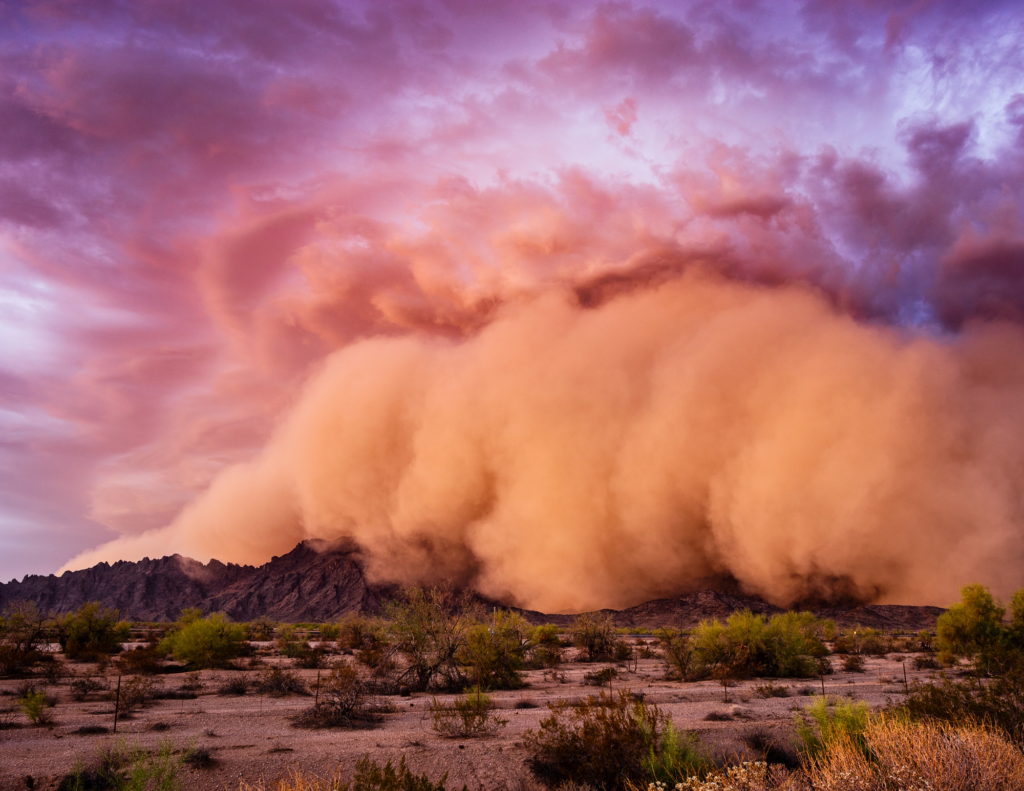
Fire Risk
Although all of these weather events can be damaging to your business, there are three main areas of concern when it comes to fire protection this time of year: heat, lightning and fire. After a long winter with very low relative humidities, gusty winds and lightning, accompanied by little rainfall can lead to rapid fire growth and dangerous conditions for firefighters and the general public.
Heat
Although the monsoon is generally associated with slightly cooler temperatures and rainfall, excessive heat is still by far the number-one, weather-related killer in the Southwest. Unfortunately, the excess moisture also creates the reverse effect as humidity becomes a factor.
The hotter the air is, the more water vapor it can hold. The higher the air temperature and/or the higher the relative humidity, the higher the heat index is and the hotter it feels outside.
Lightning
Lightning can strike up to 60 miles away from the nearest rainfall. If you hear thunder, you are close enough to a storm for lightning. Inside is a safe place to be during a thunderstorm as long as you avoid anything that conducts electricity such as corded phones, electrical appliances, wires and cables, computers, plumbing, metal doors and windows.
Fires
Weather plays a key role in the growth and vitality of fires across the southwest. Persistent drought conditions and summertime heat waves significantly drain shrubs, grasses and trees that become the dry fuels needed to feed a fire.
National Weather Service offices predict the weather conditions that may lead to the development and spread of fires. A Fire Weather Watch is issued when the combination of dry fuels and weather conditions supporting extreme fire danger and/or fire behavior is expected within 12 to 72 hours. A Red Flag Warning is issued when the combination of dry fuels and weather conditions supporting extreme fire danger and/or fire behavior is imminent or occurring.
Damages
Without a doubt, any and all weather created by monsoons can structurally harm your business. Excess moisture, whether it is saturating the air or the ground, can damage interior structures like drywall and lumber causing them to deteriorate and mold, high winds and dust storms can topple trees, remove roofs and launch debris, but what sort of damages actually heighten the risk of malfunction or failure for your installed fire protection systems?
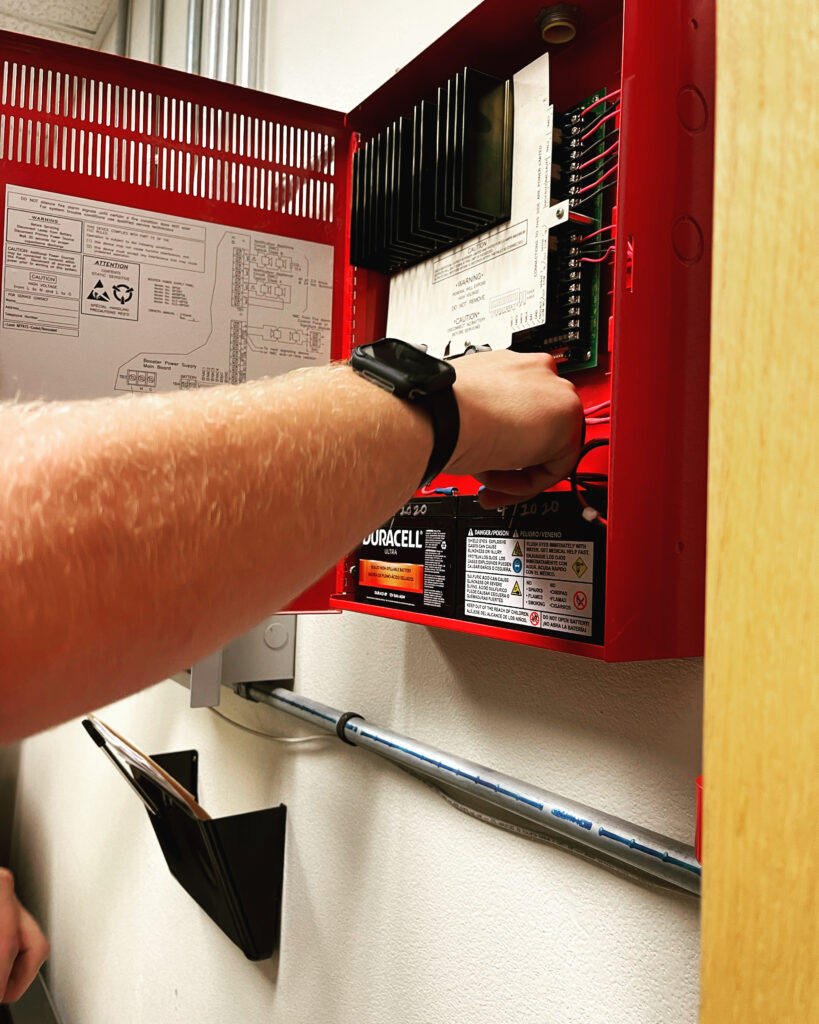
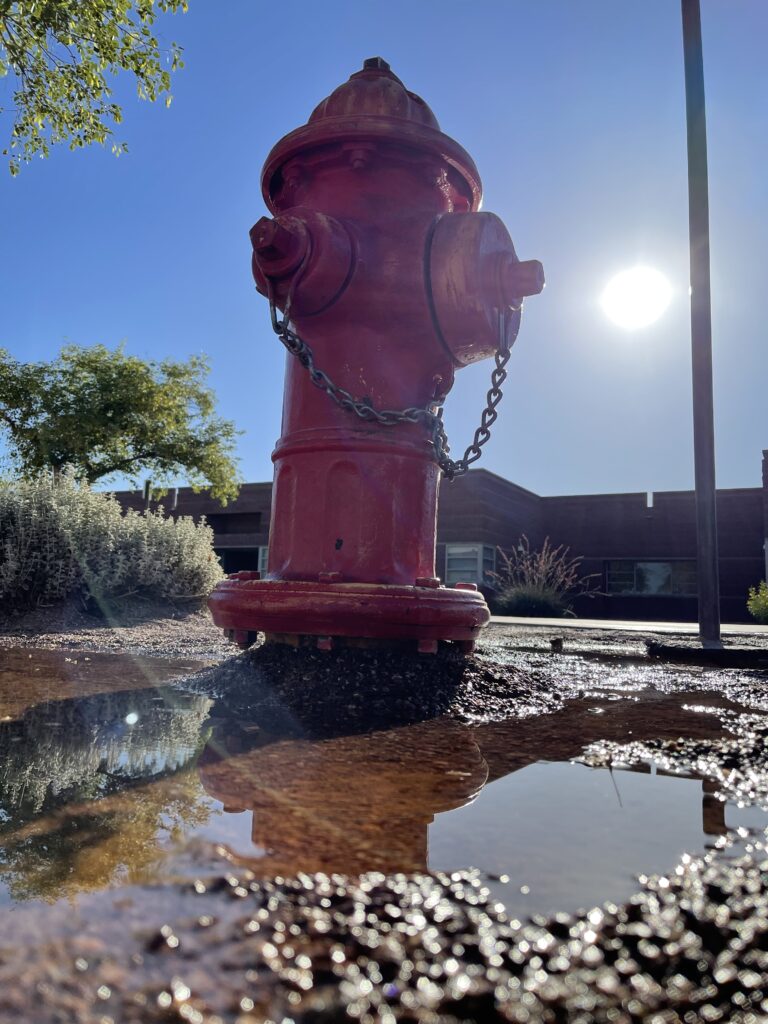
Water Systems
Did you know water expands when it heats up? Wet elements like sprinklers, backflows and hydrants are built to withstand the constant, regulated pressure needed to evacuate water as quickly as possible in the event of a fire. When the water in the system heats up day after day in the extreme Arizona summer heat, this can cause stress on critical components in the system, eventually causing leaks or even complete failure.
Electrical Systems
Wires and metal pipes conduct electricity. A fire riser room where a fire panel is most likely installed, is filled with both and is usually located towards the exterior of a building, increasing the risk that it could be severely damaged in a storm.
Power outages caused by lightning strikes and other storm damages can leave you without power for hours or days. Fire panels and emergency lights have backup battery power, but long months exposed to the elements can drain the battery’s life faster.
Take Action
Now that you know the risks, prepare your business against disaster during Arizona’s monsoon season. Taking steps to minimize your fire risk and maximize your fire response can go a long way in laying the groundwork of a favorable outcome.
First thing’s first, complete a visual inspection. If you notice any cracks, leaks, flashing lights or anything that just doesn’t seem right, make a note. Because fire protection is such a normal part of life, small things like this can often go unnoticed or be put off to deal with later. In fact, nearly two thirds of fire system failures happen because the system was shut off. Before the monsoon season, it is a good idea to schedule your system testing and maintenance so any repairs can be made. During these evaluations, we make sure all your fire protection components are in top shape; checking pressures, evaluating control functions and testing battery life. You should also develop an evacuation plan in case you need to leave in an emergency. Contact us and we can help you prepare for Arizona’s monsoon season today!
Additionally, most fire protection systems are designed to keep fire damage on the inside of a structure to a minimum, not the exterior. Take these steps to minimize fire hazards around your building. Clear the brush at least thirty feet away from your business and remove anything blocking access to hydrants, fire department connection lines and fire riser rooms. Trim tree branches away from chimneys and electrical lines. Enclose roof eaves and crawl spaces with fire resistant materials.
In the event of an emergency, get inside. The vast majority of people are killed or injured in severe thunderstorms by trees falling, from flying debris, or from downed power lines. Unplug unnecessary appliances and avoid windows. If anyone is injured or a fire ignites, call 911.
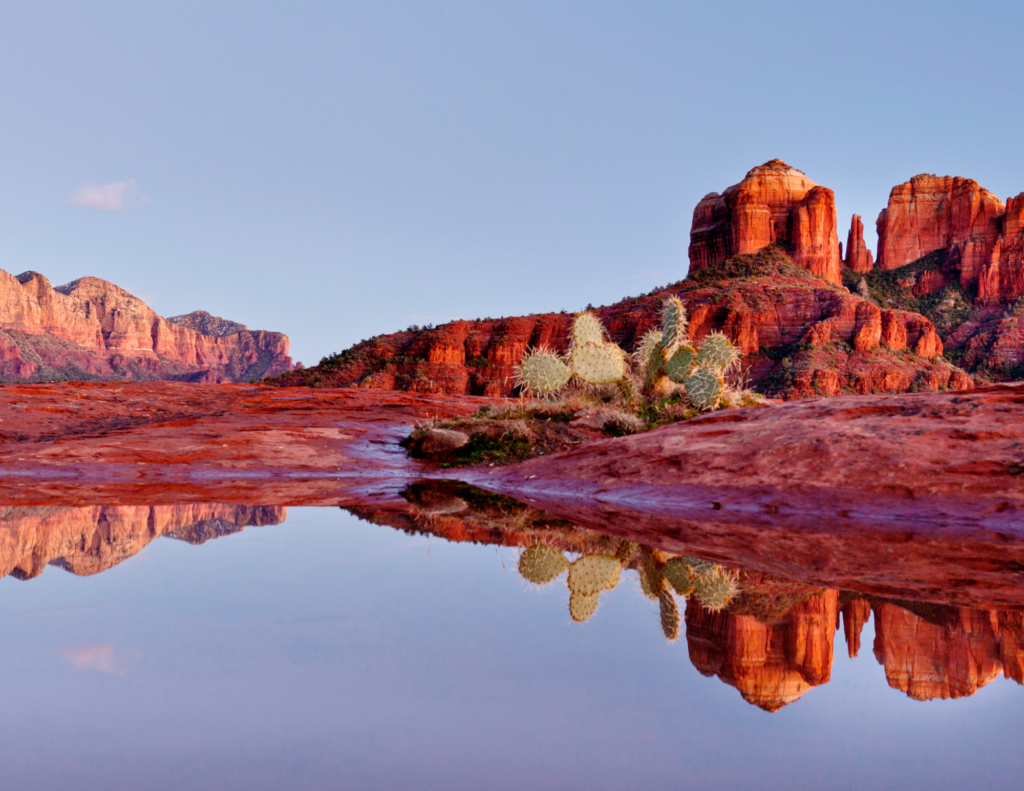
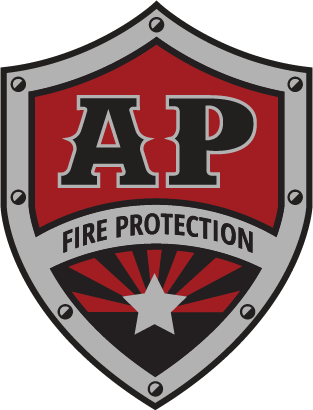
Dive straight into the feedback!Login below and you can start commenting using your own user instantly